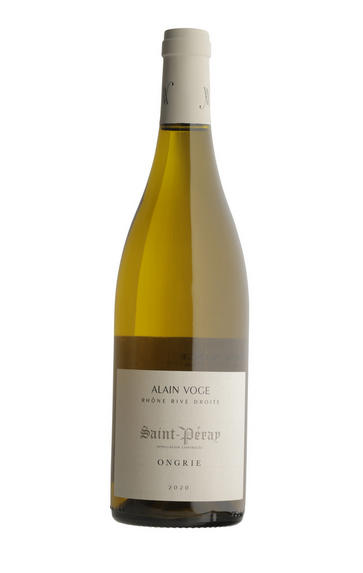
2020 St Péray, Ongrie, Alain Voge, Rhône
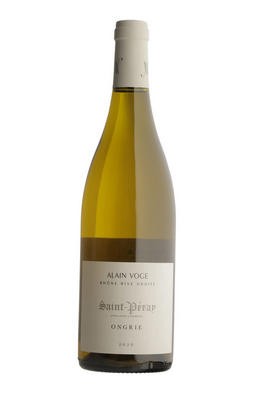
Critics reviews
Joe Czerwinski, Wine Advocate (January 2022)
Fresh pear flesh aromas alongside blonde wood and tobacco. This needs some time to knit, but there's salinity and extract on the palate, tension, vibrancy and length, too. This should be very good. Aged in 228-litre and 400-litre barrels for 13 months, 30% new oak.
Drink 2023 - 2026
Matt Walls, Decanter.com (Oct 2021)
Jeb Dunnuck (February 2022)
About this WINE
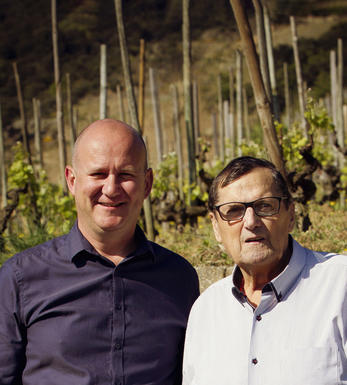
Domaine Alain Voge
Alain Voge is one of the famous names in Cornas. The domaine rose to prominence when Alain joined his father’s smallholding in the late 1950s, moving it from polyculture to focusing exclusively on wine. He became the Cornas appellation’s greatest advocate, championing its reputation internationally as well as at home. Until his death in ’20, he was regarded as the godfather of this portion of the Rhône.
In his five decades at the domaine, Alain worked meticulously: replanting abandoned slopes, regenerating old-vine Syrah and using traditional winemaking techniques to produce increasingly noteworthy wines. Following Alain’s retirement ’04, Chapoutier alumnus Albéric Mazoyer took over as co-owner and winemaker, moving the domaine to biodynamic practices. Since ’18, Lionel Fraisse has been at the helm who continues to champion the sustainable winemaking of his predecessors.
Today, the domaine spans more than 12 hectares: eight in Cornas and four in St Péray. Farmed organically and biodynamically, the wines are vinified traditionally, with the grapes largely de-stemmed and oak influence kept to a minimum in the reds. Despite burgeoning interest and price appreciation in the Northern Rhône, these wines still offer outstanding value.
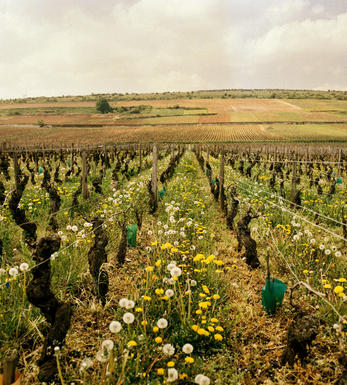
Cornas
Cornas is a small appellation, just 150 hectares, located south of St Joseph. It’s on the west side of the river. The name “Cornas” comes from an old Celtic dialect term, meaning “burnt land”, so it’s no surprise that on the steep terraces here, facing south, temperatures are significantly higher than those in Hermitage, which is just 7km away.
The granite soils are home to the Syrah grape, producing reds that sit somewhere between those of Hermitage and Côte-Rôtie. These are strong and powerful wines, with nervy acidity and a robust, rustic charm to them. Their prominent tannins mean that they often demand time in the cellar to express their underlying elegance and complexity.
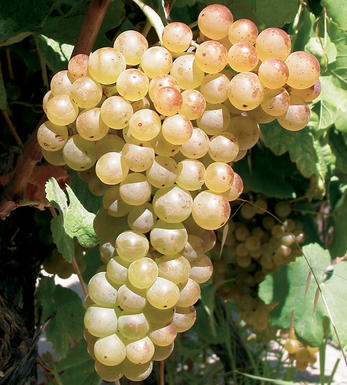
Marsanne
Marsanne is the predominant white grape variety grown in the Northern Rhône where it is used to produce white St. Joseph, Crozes-Hermitage, and Hermitage. It is a tricky grape to cultivate, being susceptible to diseases and being particularly sensitive to extreme climatic changes - if growing conditions are too cool, then it fails to ripen fully and produces thin, insipid wines, while, if too hot, the resultant wines are blowsy, overblown and out of balance.
In the Northern Rhône it tends to be blended with around 15% Rousanne and produces richly aromatic, nutty wines which age marvellously - the best examples are from Hermitage and particularly from Chapoutier. Increasingly it is being grown in the Southern Rhône and Languedoc Roussillon where it is bottled as a single varietal or blended with Roussanne, Viognier, and sometimes Chardonnay. It is also grown very successfully in Victoria in Australia where some of the world`s oldest Marsanne vines are to be found.


Buying options
Add to wishlist
Description
This is 100% Marsanne from 50-year-old vines, made with 30% new oak and extensive lees stirring. It is unashamedly opulent – rich, buttery and full-bodied, with notes of ripe pineapple, peaches, quince and honey. A hint of nutmeg makes you think of pasteis de nata. A flinty, mineral finish and hint of verbena brings freshness to the finish.
Drink 2022 to 2030+.
Georgina Haacke, Wine Buyer, Berry Bros. & Rudd (Mar 2022)
wine at a glance
Delivery and quality guarantee